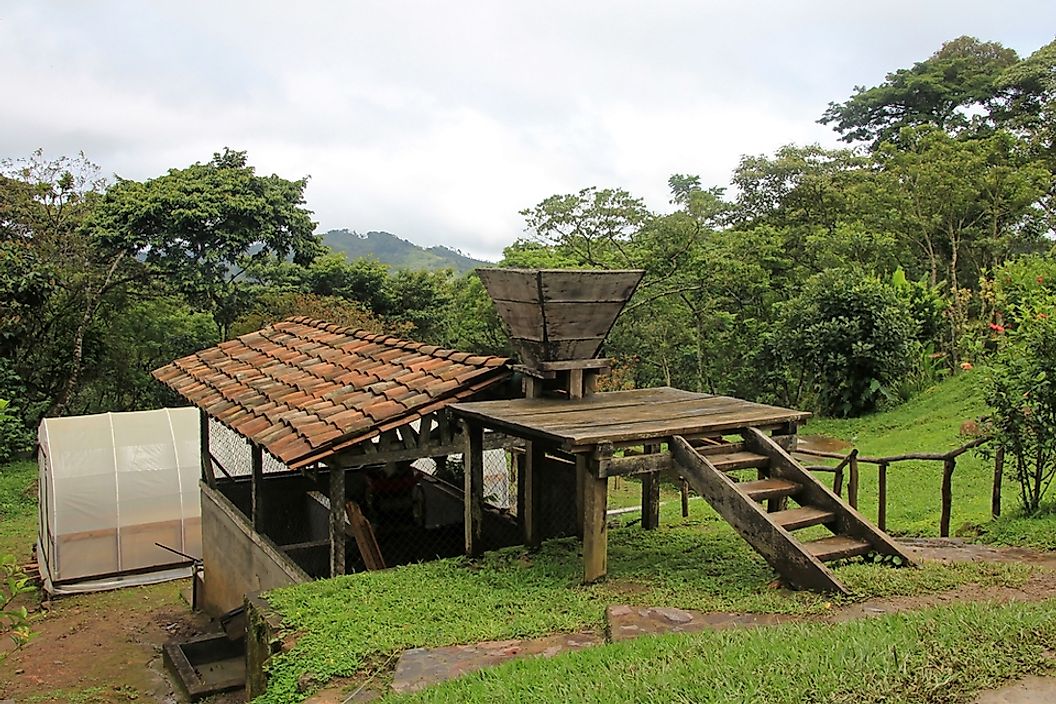The Biggest Industries in Nicaragua

Nicaragua is a country located in Central America, and is considered the least developed in the region. It has a gross domestic product (GDP) of $19.89 billion based on its purchasing power. With a total population of 6.167 million, Nicaragua has a relatively small labor force compared to other Central American countries. The average GDP per capita is about $3,300 annually, and approximately 44.7% of the population lives below the poverty line, whereas the average proportion living below the poverty line throughout Latin America is 33%.
The economy of Nicaragua has been the least developed in Central America for an extended period of time. A key factor preventing the country's economic growth is its high rate of foreign debt. However, in an attempt to relieve some of this debt, Nicaragua applied for debt relief with the World Bank and the International Monetary Fund. The World Bank has a program designed specifically for providing assistance to countries with high foreign debt, and in 2001 foreign debt assistance amounted to 25% of Nicaragua's total national GDP. In 2004, Nicaragua received $4.5 billion in debt relief, and in 2006 the country joined the Central American Free Trade Agreement (CAFTA), which prompted some growth in its export market, although this growth has been hindered by a higher-than-average rate of inflation. In 2008, for example, Nicaragua experienced an inflation rate of 19.82%.
Despite obstacles to development, Nicaragua's economy has achieved some level of growth over the past few years. In 2009, growth was slowed by the global economic crisis, but not stopped completely. In 2010, the government reported a growth rate of 4.5% as the economy recovered from the crisis, tourism began to increase, and major trade partners began to demand more exports. This development continued into 2011, when the government reported 5% growth in the economy. Nicaragua continues to rely on foreign assistance in order to comply with its budgetary obligations.
Remittances
Although not an industry, it is important to note that remittances make up 15% of Nicaragua's total national GDP. More than one million Nicaraguans live in foreign countries throughout the world, and research indicates that at least one million of these expatriated individuals send money back to Nicaragua, presumably for family members who remain in the country. The majority of these remittances are sent from Europe, the United States, and Costa Rica.
The Services Sector
The services sector makes up 56.7% of Nicargaua's economy. This sector is made up of a number of different businesses, which include: retail, tourism, healthcare, customer service, communications, financial services, hospitality, and banking institutions. Roughly half of Nicaragua's workforce are employed in the services sector.
Of these specialized businesses, tourism is the most important to the economy, as it has generated a significant amount of foreign revenue and has continued to grow consistently over the last decade or so. The revenues and economic activity produced by tourism also impact other industries, particularly the banking and finance sector. The vast majority of foreign tourists to Nicaragua visit from other Central American countries. In 2009, the country received 1.2 million visitors, and the most popular destinations are the city of Granada and the Corn Islands. The most popular activities among tourists are hiking and surfing. Visiting coffee plantations has also become increasingly popular, particularly in the northern regions of the country.
The Export Economy
Nicaragua has the 110th largest export economy in the world, with an annual value of $5.12 billion in exports. The country surpassed $1 billion in exports for the first time in 2007. Its export economy is largely supported by the agricultural, manufacturing, and industrial sectors, which produce the following goods: processed foods, clothing and textiles, coffee, peanuts, wires, petroleum products, and medications. Although Nicaragua has primarily relied on the agricultural sector throughout its history, today most economists agree that the manufacturing and industrial sectors are the principal drivers of the economy. The fastest growing products produced in the country are textiles, precious metals (like gold), and products from the fishing industry.
The textiles industry is the largest of the various agricultural and industrial products manufactured in Nicaragua, and is responsible for $1.5 billion worth of exports every year. Knit t-shirts and non-knit suits are the two most common items, making up 9.4% and 3.8% of all exports, respectively. Textiles are followed by the animal products category, which generate $1.01 billion worth of exports. The primary products in this category include: frozen beef (5.8% of exports), crustaceans (4.7%), and beef (3.2%). The third largest export category is fresh produce, especially coffee (8.3% of exports), peanuts (2%), and dried legumes (1.5%).
The primary receiving countries of Nicaragua's exports are: the United States ($2.8 billion), Mexico ($536 million), and Venezuela ($290 million).
The Import Economy
Nicaragua imports $6.2 billion worth of goods every year, which gives the country a negative trade balance of $1.17 billion. In other words, Nicaragua imports more than it exports. The principal import origins are: the United States ($1.09 billion), China ($864 million), Mexico ($697 million), Guatemala ($503 million), and Costa Rica ($496 million).
The country's largest import category is machinery, at an annual value of $1.13 billion. Within this category, telephones and insulated wire are the two most common items, making up 1.8% and 1.1%, respectively. The machinery category is followed by chemical products, which total $909 million. Primary chemical product imports include: medication (4.7% of imports), pesticides (1.6%), and mixed mineral and chemical fertilizers (0.7%). The third largest import category is mineral products, especially: refined petroleum (6.2% of imports), crude petroleum (4.3%), and petroleum gas (0.71%).











